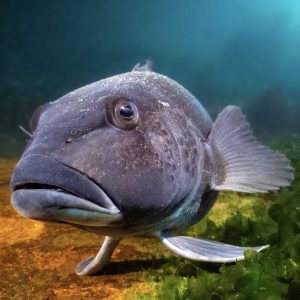Fish dumping and unnecessary wastage in our fisheries has to stop, and many of you have the handiest tool to address it – your cellphone camera.
Several trawlermen have revealed that dumping happens on every trawl. One skipper estimates 10-15 bins of undersized fish were thrown back dead after every trawl. The crew is required by law to discard undersized fish, but damaged or unmarketable fish are dumped as well.

Most of this wastage goes unseen because it happens over the horizon or after dark. During daylight skippers often taken evasive action and stop dumping fish when recreational fishers start filming their actions.
In February experienced fisherman Kerren Packer found a trail of dead gurnard floating off the Manukau Harbour, on the northwest coast. He was so concerned about the wastage he used his cellphone to video the scene. This footage went viral on the internet and created a media work-up.
The response from the Ministry for Primary Industries was underwhelming.
Dave Turner, Director Fisheries Management, described the incident as “accidental loss” and confirmed the skipper had filled out the necessary forms. Not just for this incident, but for nine other events over the past three years. This settled the matter for the Ministry.
How can this be acceptable?
The very existence of “accidental loss” paperwork signals the prevalence of dumping and the Ministry’s sanction as long as all legal-sized fish are counted against quota.
This is not good enough. Better at-sea information is required.
In 2013 the Minister required increased coverage on inshore trawlers by observers and cameras. For almost a year commercial fishers on the northeast coast have been self-reporting the weight of undersized snapper discards from every trawl. No results have been released yet.
Our fisheries are a national and natural resource, there for us to enjoy and protect for future generations. We cannot nurture this resource if trawl nets are being dragged, for hours, across the seafloor every day.
Trawling within 100m depth has the inevitable consequence of catching small fish, and unwanted species, unmarketable or uneconomic fish are slipped over the gunnels without even the slightest of blinks.
Innovative solutions
LegaSea has developed policy to address trawl damage and fish dumping issues. Ban trawling within 100m depth contour and rebuild inshore ecosystems.
Protecting inshore benthic (seabed) communities and habitats from damaging bottom contact fishing methods is a priority as this is where snapper fry and other small fish live, grow and hide from larger predators.
Another solution is to develop fishing gear standards that limit the catch of undersized fish. These standards need to apply to trawl and Danish seining.
If correctly applied we expect the standards will achieve the following outcomes:
- Reduction in the at-sea capture of juvenile fish
- Reduced mortality of small fish
- Reduction in the level of unintended bycatch
- A rehabilitation of nursery grounds
- An increase in yield per recruit i.e. bigger fish
- Increased diversity and abundance in the marine ecosystem.
There are several promising innovations underway. Two trawlermen from the Hawke Bay have taken it upon themselves to develop ways to reduce juvenile mortality.
Rick Burch on the Nancy Glen II has been trialing a square mesh net and light trawl gear to replace the diamond mesh that has been used to devastating effect on our coastline for more than 100 years. Preliminary results are positive, with fewer juveniles being caught, less bottom contact and increased fuel savings.
Karl Warr has been developing a sorting cage designed to enable small fish to escape before getting squashed in the net’s codend.
LegaSea keenly awaits updated results from both trials.





